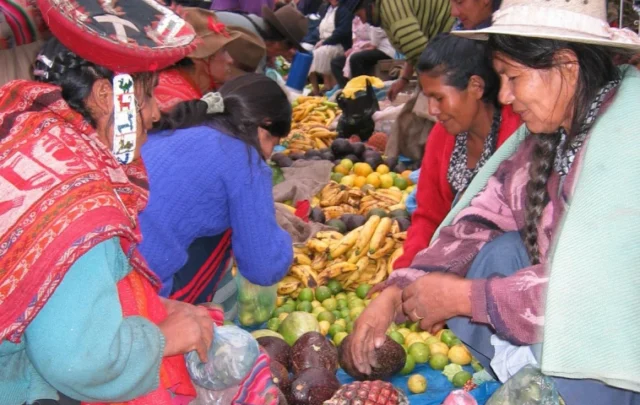I thought I’d write a follow up to my previous post by way of replying to the various interesting comments it received. But I won’t mention any commenters by name in case they’d prefer not to be so publicly identified.
So, first – I was possibly a bit negative about Adam Greenfield’s book Lifehouse in my previous post. It has many strengths. I like it that he’s not overly wowed by techno-fixes or the idea of a renewables transition’. On the latter point, there’ve been two interesting reviews of books I need to read recently in The London Review of Books. Energy market expert Brett Christophers on Malm and Carton’s Overshoot, and all-round expert Adam Tooze on Jean-Baptiste Fressoz’s More and More and More: An All-Consuming History of Energy. Seems like the answers to the question ‘how’s the energy transition doing?’ in these two books are either (1) Badly, or (2) There isn’t and never has been any ‘energy transition’. And to think of the time I’ve wasted debating things like S-curves with true believers. No more!
A quick digression on food techno-fixes in relation to this. It now seems likely that to meet global human protein requirements through manufactured microbial matter would require more than the entire world’s electricity supply, and almost certainly more than its low-carbon electricity supply. Electricity is the easiest thing to decarbonize, and we’re not even succeeding at that. Honestly, it’s time to lay the manufactured food fantasy to rest.
But back to Adam Greenfield’s book. Adam’s idea of lifehouses built out of existing forms of social organisation is another good feature of his book. Though one point of difference I have is that I don’t think those forms should be confined only to ones acceptable to orthodox left-wing opinion. Hence, as mentioned by commenters under my previous post, pubs and churches are also worthy of consideration. I’m always glad to hear it for the good old British pub. Historically, I don’t know how inclusive they’ve been, but maybe things have moved on. Still, in tune with the general privatisation and gentrification of modern life, they’re perhaps not the community hubs they once were?
Regarding churches, Adam does in fact mention them in his book, but only in the form of empty buildings with the potential to be repurposed physically as lifehouses. It’s perhaps significant that churches appear in his index as ‘Church buildings’. Adam talks about the precipitous decline in the profession of the Christian faith and the decrepitude of the buildings. In my view, churches on the contrary become important as lifehouses the more they have active congregations. Churches and other places of worship do still have active congregations, especially outside western Europe. The role of religion and spirituality is something of a blind spot of the left – I hope to say more about that soon.
The main problem with churches, though, is that despite the mighty efforts of some of their members, they can only be nodes of distribution to meet people’s material needs, not major long-term producers of them. As one commenter pointed out under my previous post, a more obvious candidate in that respect, and a more obvious form of lifehouse, is a farm. That led to an interesting discussion about whether and what kinds of farm could be lifehouses.
Is there a sufficiently strong alternative/agroecological farm sector ready to step into the role of lifehouses in rich parts of the world like North America and Western Europe? I’d have to say no (shoutout here for Matthew Ingram’s new book The Garden: Visionary Growers and Farmers of the Counterculture, which provides a detailed history). But that’s what I’d be looking to strengthen. The idea of getting local investors to buy land to establish local food enterprises was mentioned – something I’ve also discussed with various people, including Nate Hagens. There are various initiatives I know of in the UK and the USA – some with a strong public profile like the Ecological Land Co-op and some a bit more under the radar.
I think this is a good way to go, provided the farmers are protected from investor self-interest and from commodity food prices. Both these things are possible, but not easy. Perhaps a discussion for another time. At the moment, though, these developments are nowhere near where they need to be.
Building from the present low base, I’d suggest that farmers could do worse than asking these six questions in respect of the lifehouse potential of their land:
- Do I have resilient water sources?
- Can I produce food and/or fibre with no or limited fossil fuels?
- Can I fertilise food crops without major external inputs?
- Can I produce timber?
- Do I have a good range of residential and agricultural buildings that can be kept in repair?
- Do I have strong connections with the surrounding community?
It bugs me that I can’t really offer a strong yes to some of those questions in respect of my own little spread. But this is what we need to be working on.
This focus on resilient agrarianism underlines the point that ‘taking care of ourselves in a world on fire’ – to invoke the subtitle of Adam’s book – is going to be a heavily rural affair. And this is my main beef with his book. As I said before, while Adam thinks “it’s a reasonable bet that whatever else happens, most of us will continue to live in densely settled urban places even amid the worst conditions of the Long Emergency” (p.182) I think this is a very poor punt indeed.
I’ve written and spoken copiously about the overemphasis on urbanism in modern times, and I’m almost done with it. I’m not planning to write any more ‘The cruel fantasies of the well platformed’ articles about our kneejerk modern urbanism, but I do think people are selling themselves and others short with our inability to even contemplate a more rural future. Honestly, I’m tempted to call it Of Mice and Men in modern garb: ‘Tell me about the cities, George’. But, for the record, I’m not writing myself into the ending of that story. I’m not George. There are so many ways in which I’m not George.
There was an interesting discussion about the romanticisation of the rural and the urban under my previous post. It’s something I’ve mentioned here before. Why do we police so vigorously anything that smacks of rural romanticism (like … even mentioning the possibility of future ruralisation) while giving romanticisations of the urban a free pass? Possibly because the people whose voices get heard are so thoroughly imbued with urbanism (the point I made in my previous post about urban anxiety at the thought of a rural and agrarian life), or possibly even because squashing ideas of rural autonomy suits contemporary power structures. Maybe it has to do with the bad historical memories of the hollowed out small farm communities that were mentioned, though I’m not sure memories stretch back that far in Britain at any rate. As was pointed out in the discussion, urban areas are usually pretty hollowed out too.
Sometimes I think people just project the rural as the mirror image of the urban, for which read ‘modern’ or ‘prosperous’. In his review of Patrick Joyce’s book Remembering Peasants (I reviewed it here) Colm Tóibín mentions an account of peasants in Extremadura who “lived in medieval conditions, ravaged by malnutrition, malaria and inbreeding, and almost without a culture.” It’s the ‘almost without a culture’ that bugs me here, unless the point is that extreme poverty leads to extreme degradation. In which case why not just say that – it’s true in cities too.
More recently in Brazil, recruitment activists of the landless workers movement report “It’s always more difficult in the cities … people have lost hope”. How do we deepen this discussion?
Indigeneity is often presented as modernity’s other too. Is it just me, or does this report that was mentioned of the Kogi read a bit oddly?
Anyway, we somehow need to be having more sophisticated conversations about all this.
One thing the discussion under my previous post touched on was the unpleasant matter of violent social collapse, population die-offs and related nasties like enslavement. I have a few questions about this. First, people can be quite committed to their chosen position on the doom vs ‘optimism’ spectrum and dismissive of others who they view as either too doomy or not doomy enough. Having been accused of both these crimes quite often, I don’t really know how best to navigate this or to have good conversations with people that transcend where we place ourselves on this spectrum. Thoughts?
Second, if we turn the dial to the doomy end of the spectrum, is there anything worth saying about this? We can probably agree that wars, major climate or weather disasters and economic crashes may happen and if they do they will cause suffering and death of potentially catastrophic proportions. Are there productive conversations we can be having about these outcomes, other than hoping they don’t happen and speaking up for whatever heroic efforts we believe will prevent them? Is there anything to say except all bets are off in a disaster scenario?
Writing this, the case of Gaza springs to mind. I haven’t said anything about it on this site because I don’t really have anything to say that more informed people can’t say better than me. But I fear this is a wave of the future – a world of deathhouses as well as lifehouses, with people separated between them by various militarised walls and borders. Life proceeding tolerably on one side, utter misery and destruction on the other. How do we talk about this? There will be some of Adam’s lifehouses even within the larger deathhouses, but is that the point to focus on?
Third, there’s a spectrum of labour disciplining and coercion. Full blown, systematic slavery seems to me mostly a project of functioning centralized and monetized imperial states and their peripheries. It’s not uppermost among my concerns in the context of collapse scenarios, although as the peripheries grow I guess its probability increases. To some extent, that applies also to the king-warlord-feudalism dynamic. I talk quite a bit about this latter one in my new book. Basically, I think we’re poorly equipped with theories of demodernisation that can help understand how this will play out and what we can do to try to mitigate against the worst outcomes. I’m interested in any thoughts.
On a somewhat related note, as President Trump amps up his bull-in-a-china shop act I’m wondering about how to orient to that too. There are those who think his presidency is an existential threat to liberty and peace. Which I think is probably true, but I’ve also come to think his presidency is not some aberration of modernist politics but a logical development of it long presaged in the panoply of less monstrous leaders. If we rage against the likes of Trump, but don’t rage against the likes of Joe Biden or Keir Starmer (or even Jeremy, Bernie and AOC), then I think we’re missing the bigger picture (I confess to doing that in the past). One aspect of this per recent discussions here is that I’m not overly persuaded about holding tight to states and governments and their legal frameworks as deliverers of justice. There might be ‘right sides of history’ but if you believe in the state as the entity to deliver it you’re probably backing the wrong horse. There are of course a million viewpoints out there about all this. Here’s one I found interesting. And here’s another. And here’s just one more. I hope to contribute my own at some point, so I’m interested in people’s views.
Finally, a bit of expectation management. My book does say a little bit about ‘craft’, but not all that much. Hopefully we can have some crafty conversations here on this site in the light of it, though. Likewise with many other topics that it touches lightly on. One thing I’ve learned in recent years about writing books is that you usually have much less space in them to develop ideas than you do on a blog.
I’m now going to be wrapped up with the final editing stage of the book for the next month or so (along with some tree planting – hope springs eternal), but do feel free to drop in on this little corner of the virtual world in the interim.
Note: I amended this post after publishing the first version to correct a couple of typos and to express greater uncertainty about the manufactured food energy data – which I think is warranted until I’ve had a chance to do a proper work through of the figures.






